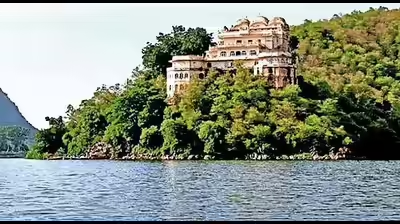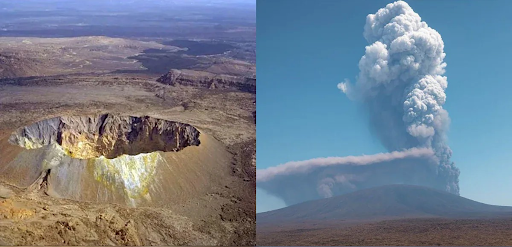




The regional assembly of Portugal’s Azores Islands approved the creation of the largest protected marine area in the North Atlantic to reach international conservation goals well ahead of time.
|
|
|
|
Location |
It is a group of nine islands in the North Atlantic region. West: Flores and Corvo Centre: Graciosa, Terceira, São Jorge, Pico, and Faial East: São Miguel, Santa Maria, and the Formigas islets |
|
Origin |
The islands are of volcanic origin, with some volcanoes now inactive. They are part of the Autonomous Region of the Azores. |
|
Language |
The official language in the Azores is Portuguese. |
|
Geological |
The archipelago sits atop the Azores Plateau and lies above the Azores Triple Junction, where three major tectonic plates (Eurasian, North American, and African) converge. |
|
Tectonic Structure |
The Mid-Atlantic Ridge, the tectonic structure, runs between the African-Eurasian Plate and the North American Plate, crossing the Azores Plateau. |
|
Highest Peak |
Mount Pico, located on Pico Island, is the highest point in the archipelago. |
|
Climate |
Oceanic subtropical climate, is characterized by mild temperatures year-round and moderate rainfall. Frost is non-existent in the Azores. |
|
Fauna |
The islands’ Laurel forests house a variety of species, including two endemic bird species: the Azores bullfinch (found in laurel forests) and Monteiro’s storm petrel. |
Source:
ALSO READ ABOUT-
Context:
An Indian Air Force (IAF) havildar and his 14-year-old son were swept away by strong currents in the Kameng River in West Kameng district, Arunachal Pradesh.
|
|
|
|
Origin |
It originates in the Tawang district, from a glacial lake below the snow-capped Gori Chen Mountain on the India-Tibet border. |
|
Transboundary Status |
Not a transboundary river |
|
Flow |
It flows through Bhalukpong Circle, West Kameng District (Arunachal Pradesh), and Sonitpur District (Assam) |
|
River Type |
Braided river in lower reaches |
|
Major Tributary |
Brahmaputra River |
|
Confluence with Brahmaputra |
Joins Brahmaputra at Tezpur, east of Kolia Bhomora Setu bridge, Assam |
|
Boundaries |
Forms boundaries between East and West Kameng Districts |
|
Sanctuary Boundaries |
Forms boundary between Sessa and Eaglenest sanctuaries (west) and Pakke Tiger Reserve (east) in Arunachal Pradesh |
|
Hills |
Dafla Hills to the east, Aka Hills to the west of Kameng River |
|
Tributaries |
Tippi, Tenga, Bichom, Dirang Chu |
|
Historical Significance |
Served as the border between Chutiya Kingdom and Kamata Kingdom (13th to early 16th century) |
|
Post-16th Century Significance |
After the Chutiya kingdom's annexation by Ahoms and Kamata's fall, it became the border between the Ahom kingdom and Baro-Bhuyan rule |
|
Tribes Around Kameng River |
Monpa, Aka (Hrusso), Sherdukpen, Nyishi, Adi (Galo), Tagin. |
|
Fauna |
The region has numerous endangered species, including the Bengal tiger, Asian elephant, clouded leopard, and the vulnerable Indian giant squirrel. |
READ ABOUT-
State wise Rivers List in India
Source:
|
PRACTICE QUESTION Q.Kameng is referred to as the "Jia Bharali" in Assam's higher reaches. The tributaries of the river include?
Select the correct answer using the code given below: (a) 1 and 2 only (b) 1, 2, and 3 only (c) 1, 3, and 4 only (d) 1, 2, 3, and 4 Answer: c Explanation: It is a major tributary of the Brahmaputra River in Arunachal Pradesh’s East Kameng district. It is called Jia Bhorelli in Assam. It is a lifeline for many and has its source in a glacial lake near the Nyegi Kangsang, one of the highest mountains in Arunachal Pradesh. Major Tributaries: Tippi River, Tenga River, Bichom River, and Dirang Chu River.
|







© 2025 iasgyan. All right reserved